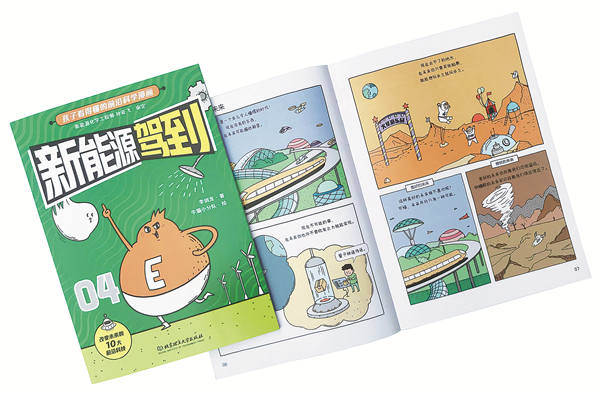

Each booklet has been proofread by an expert in the specific field, to ensure accuracy. Li also lists several questions and answers at the end of each booklet, for those who want to know more about the subject.
"Children can only understand things related to their life, and abstract academic definitions are all Greek to them. You have to put yourself in their shoes," he says.
"That's also a difficulty for me to deal with. I have to 'translate' the scientific materials that I read into simple yet appropriate metaphors."
He says it's essential to draw the attention of children with an interesting story first, so that they will think the technology is great fun. Then, he starts to explain the basic theories, review its development and predict its application in the future, with other stories.
One of the booklets offers a vivid narration of a cute cartoon image of China's Mars rover, introducing its major detection tasks, such as a survey of the topography and geology of Mars and its weather and magnetic characteristics.
China's Tianwen 1 mission, consisting of an orbiter, a lander and a rover, was launched on July 23,2020. It so happened that Li was selecting topics for the booklets around that time, so he decided to include China's Mars rover in the collection, to keep up with current events.
In May, China successfully landed its first Mars rover Zhurong, named after the god of fire in ancient Chinese mythology, on the red planet.
On Aug 15, Zhurong had been on the surface of Mars for 90 Martian days, or about 92 Earth days, accomplishing its exploration and detection tasks as planned.
When they were creating the comics about what China's Mars rover does, Zhurong was actually on its way to the red planet. It's such a coincidence that the collection's publishing date is at a similar time with the estimated landing date of Zhurong.